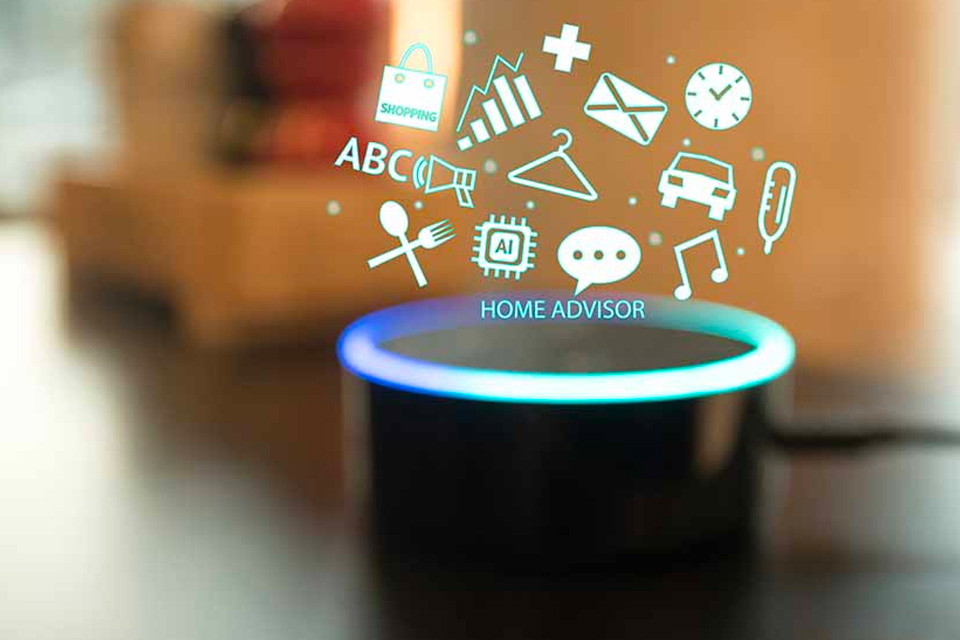Do you have an Amazon Echo or a Google Home sitting on your desk? You’re not alone. Digital personal assistants were one of the top gifts this past holiday season.
If you have one, you may rely on it every day to do a variety of tasks, from playing your favorite music to ordering new office supplies. It can help you do a little research or plan for your upcoming trip.
They may be fairly simple today, but like other technologies, we know their capabilities will expand rapidly in the coming weeks and months. And they will continue to infiltrate our home and office space, no longer being a “new toy” but a fixture that is just a part of our daily lives.
Comscore predicts that 50 percent of all searches will be voice searches by 2020.
Gartner predicts that 30 percent of all searches will be without a screen by 2020.
That means we have a lot of changes coming our way in how we perform everyday tasks.
It also means that as marketers, we have a lot to learn about the way we target prospective customers.
What if your customer no longer pulls up Google and types in a search term, but uses voice commands instead?
The coming years may bring even more stress into marketers lives. But it can also provide great opportunity. And digital personal assistants are only the start. The Internet of Things (IoT) is going to continue taking our world by storm. Everything in our homes and offices will soon be connected in some manner. Gartner predicts that by 2020, more than 20.4 billion items will be connected devices.
They will include things like:
- Refrigerators
- Thermostats
- Watches
- Cars
- Televisions
- Security systems
If you use it, chances are it will be connected in some manner in just a few years. This will create a world where information is always within reach. There won’t be a browser window or a search box. Instead, information will be delivered in many different ways.
Using Voice
What will continue to rise over short periods of time is voice commands. It’s more practical to have something work for you that you don’t have to touch and click and swipe. Plus those small keyboards can be quite annoying to an aging population. While typing “What’s the best Italian restaurant near me” can take quite a bit of effort with sore fingers and poor vision, saying it can get results in a matter of seconds.
The explosion of IoT means no keyboards. As a result, refining our queries will take on a new direction.
Again, back to searching for a restaurant. With typing, we think in short keywords. “Italian restaurant.” Or maybe we know part of the name and incorporate that too: “Ginos Italian restaurant.” Then we wade through the top ten results, looking for the best that fits our desires.
Voice changes that. We move back to thinking in questions, not keywords. So we’ll be looking for more precise answers one at a time, instead of wading through results searching for a decent match.
Using Devices
It started with Siri’s launch on a smartphone back in October 2011. Google Now came a few months later in 2012, followed by Cortana from Microsoft in 2013. The devices and names will continue to morph and change as the years pass by, but the power of their functionality will only continue to increase.
Google Now morphed into Google Assistant with a purpose to engage in two-way conversations. Ask it a question, and it will give you an answer. What makes it interesting – and expandable – is its desire to use one personal assistant for every aspect of your life. It transfers without interference from your phone to your tablet, to your desktop, to your watch, to your refrigerator, to your car … You get the picture.
When your assistant is cloud-based, it can seamlessly conduct all of your online business with whatever device is most convenient for the end result. By speaking a few commands, you can use your personal assistant for home control, entertainment, scheduling, connecting with friends and family and building relationships, purchasing, research, even life management.
It’s no longer just about thinking what people will search for. It’s about thinking about where they search and with what device. You may work with your smartphone one way, and connect with your watch in an entirely different manner.
Dig Deeper
How Behavioral Marketing Can Get Your Customers Clicking
Creating Your Customer Journey Map
How Can You Get Ready For This New World?
The first step is to start using the technology. Many people put off graduating to newer technology, instead sticking with the familiar.
Your customers are moving ahead.
So is your competition.
By jumping in early, you start to discover how a new technology is being used. Take note of how you search using IoT in your daily life. Order your supplies through your digital personal assistant. Allow technology to help you in different ways. Stretch. See what you can do.
And learn.
The second step is to think of how your products and services fit into this new world. What queries will people use to discover more about what you offer? What questions or problems arise before they locate you?
Get involved with the creation of new technology. It’s easier than you think.
Alexa Skills, for instance, lets you teach Alexa new skills. These aren’t difficult to work with. And by getting involved early, it helps you start learning new things about the direction we’re going.
One of the first things you’ll discover is that open-ended questions are no longer the best course of action. That differs in many ways from what we’re taught about the selling process.
But when technology takes over, it’s important to ask questions that can lead to the type of answer you can provide to lead them through your navigation.
Will this process stay simple in the coming months? Yes. But you can also see how it will quickly morph and allow anyone to perform rapid voice commands to get exactly what they want.
“Deliver my favorite pepperoni pizza to my home at 6pm and put it on my normal credit card” is well within reach.
Think a digital personal assistant isn’t important to the way you market today? Think again.
If you haven’t explored how the newest technology is changing the playing field in your marketing space, maybe it’s time you did.




